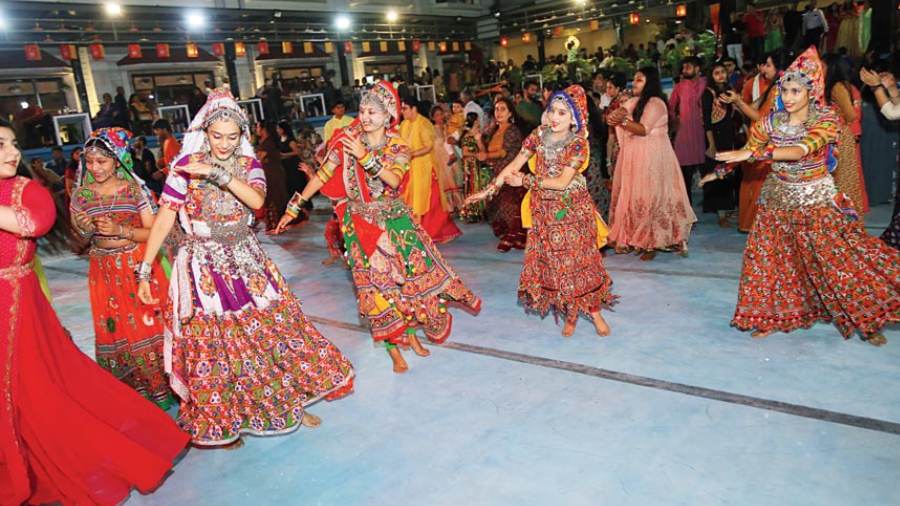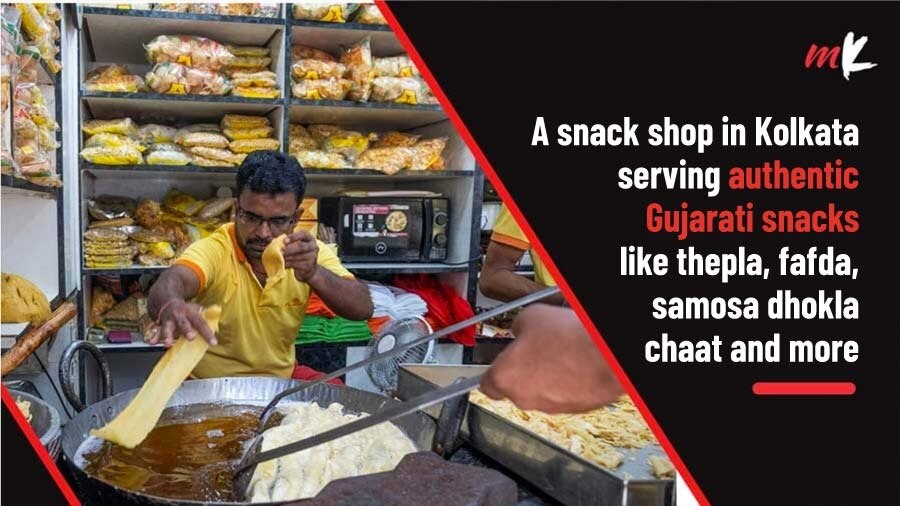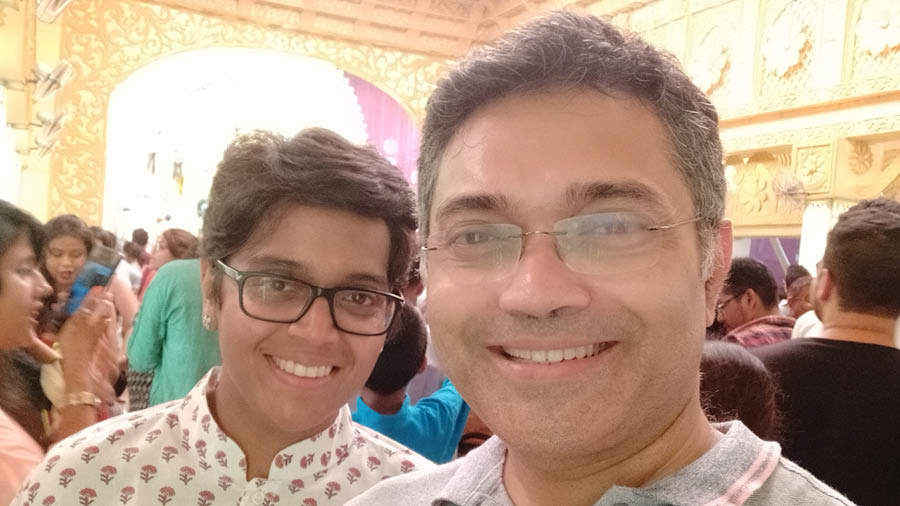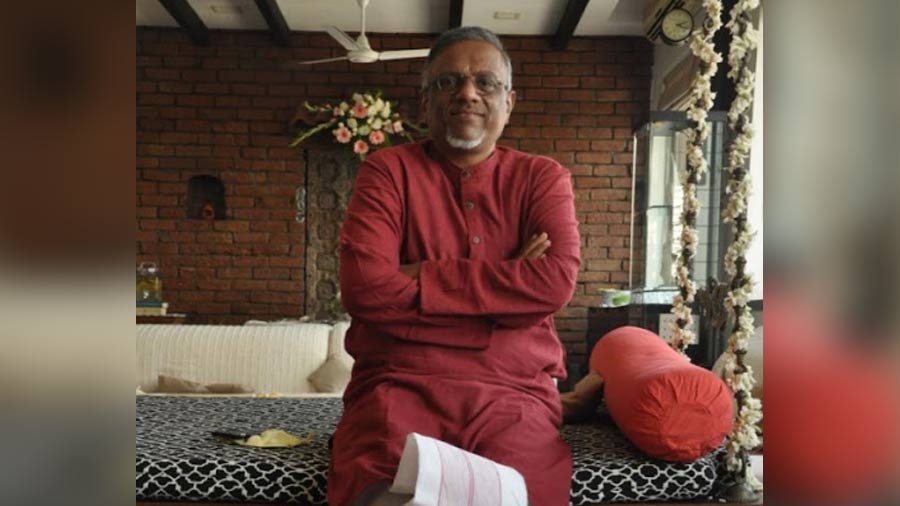Durga Puja isn’t just a Bengali festival, it is a Kolkata festival. Pujo has cemented itself in every heart that beats in, and for, the city. For the Naygandhi family, festive fervour doubles in scale with Durga Puja and Navratri celebrations. My Kolkata spoke to the Naygandhis, owners of Kolkata’s much loved Gujarati snack destination AnnaRas, about how they navigate through this dual celebration.
Akanksha, who has helped her parents Bipin and Bharti Naygandhi in growing the store’s digital presence, is reminded of two elegant pots every time someone mentions the festival. Garba, as they are natively called, are an integral part of worshipping Goddess Ambe, and her family brings home two of them every year during Navratri. “We sing aartis and bhajans every evening, which speak about the goddess’s qualities. One that particularly strikes me is Aasma na rang ni chundadi,” says Akanksha. A lot of her childhood memories are intrinsically linked to AnnaRas too, such as taking the staff pandal hopping during their time off on festive days.

The staff at AnnaRas TT Archives
While evenings are reserved for devotion, nights are dominated by dance. The Naygandhis frequent garba and dandiya celebrations every single night. “Several organisations like Raghuvanshi Forum, Gujarat Club and Friends Sporting Union organise events around the city. In recent years, JW Marriott has emerged as one of the most popular spots for everyone to celebrate. To be fair, while there is a huge crowd playing at JW every year, an even bigger crowd turns up to just watch people,” Akanksha laughs.
What about Durga Puja then? The family has devised a novel way to enjoy both the festivals, without compromising on either one. Akanksha explains, “Earlier, pandals were only ready on Sasthi, but since the last few years they have opened to the public from Mahalaya. We start our pandal hopping early and evade the crowds, finishing every Puja that we want to see by Panchami. From then on, the nights are reserved for garba!” The first puja the Naygandhis visit is Abasar, a stone’s throw from their Bhowanipore home.
Noticing the passion for pandal hopping amongst Gujaratis, garba organisers have also devised a new strategy. “It is very difficult to pack pandal hopping, socialising and garba into 10 days. Moreover, garba is strenuous, and you’re dancing all night. You can’t do much the next day,” she chuckles. “Our clothes and jewellery are always out and the house is in a mess for a month. There is always somewhere to be, and someone to visit. And you can’t repeat outfits!”

The days following Panchami are all about dandiya and garba events for the Naygandhis TT Archives
While Akanksha remembers it being a nine-day affair during her childhood, the ‘vibe’ of the festival is now spread over a month. “The first events begin 10 days before Mahalaya. Jain Social Group has already organised two pre-Navratri events. The mood remains till after Dussehra, with the last event wrapping up on Sharad Purnima.”
As owners of AnnaRas, duty calls the family throughout the festivities, with both Bengali and Gujarati sweets and savouries seeing massive demand. Akanksha explains how the demand peaks on Dussehra, where it is almost ceremonious for Gujaratis to have gathiya and jalebi. “A lot of advance planning goes into preparing for just that one day, and the numbers don’t lie. We sell around 200kg of gathiya and 1,500 jalebis!” a beaming Bipin signs off.



